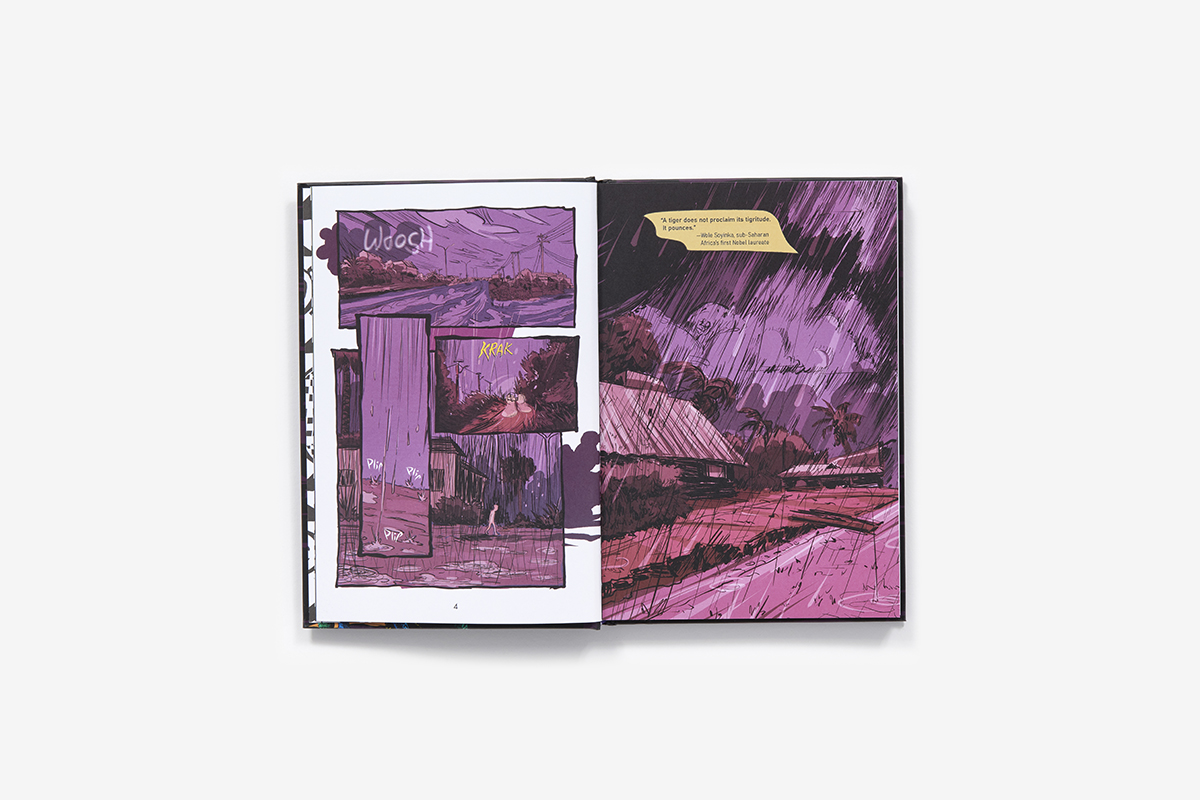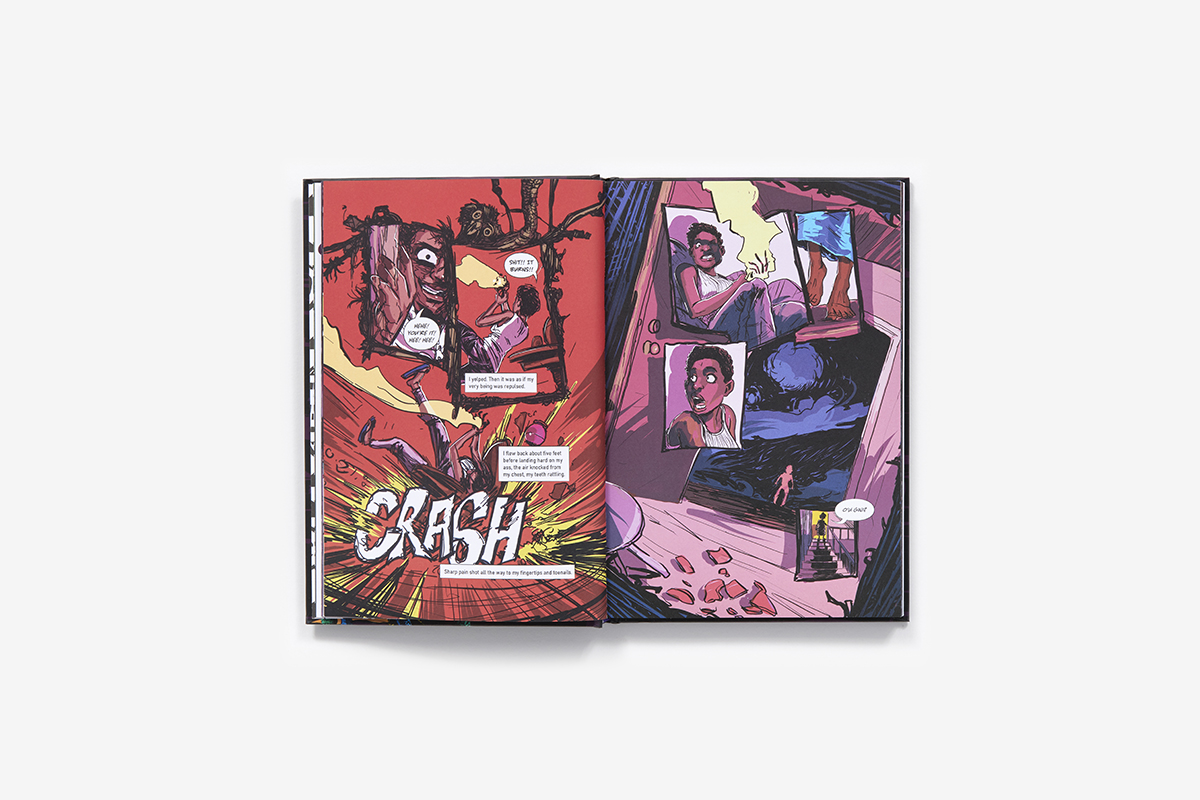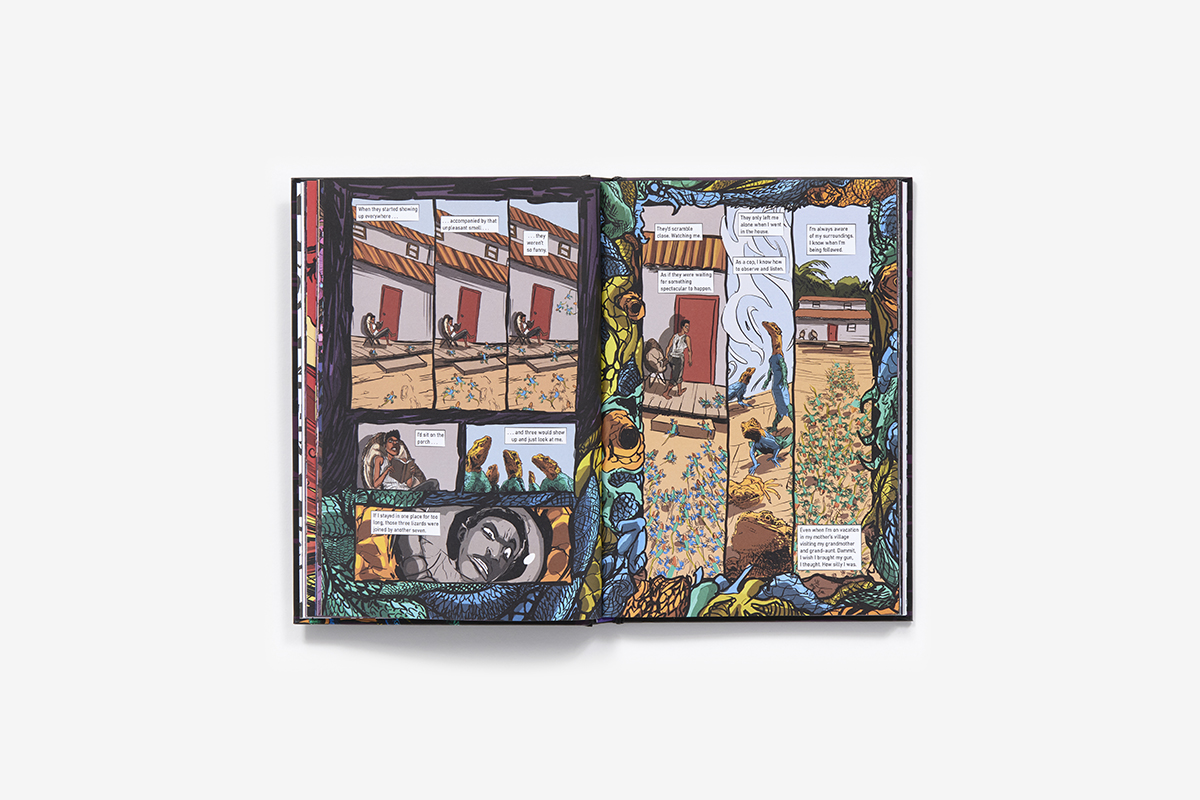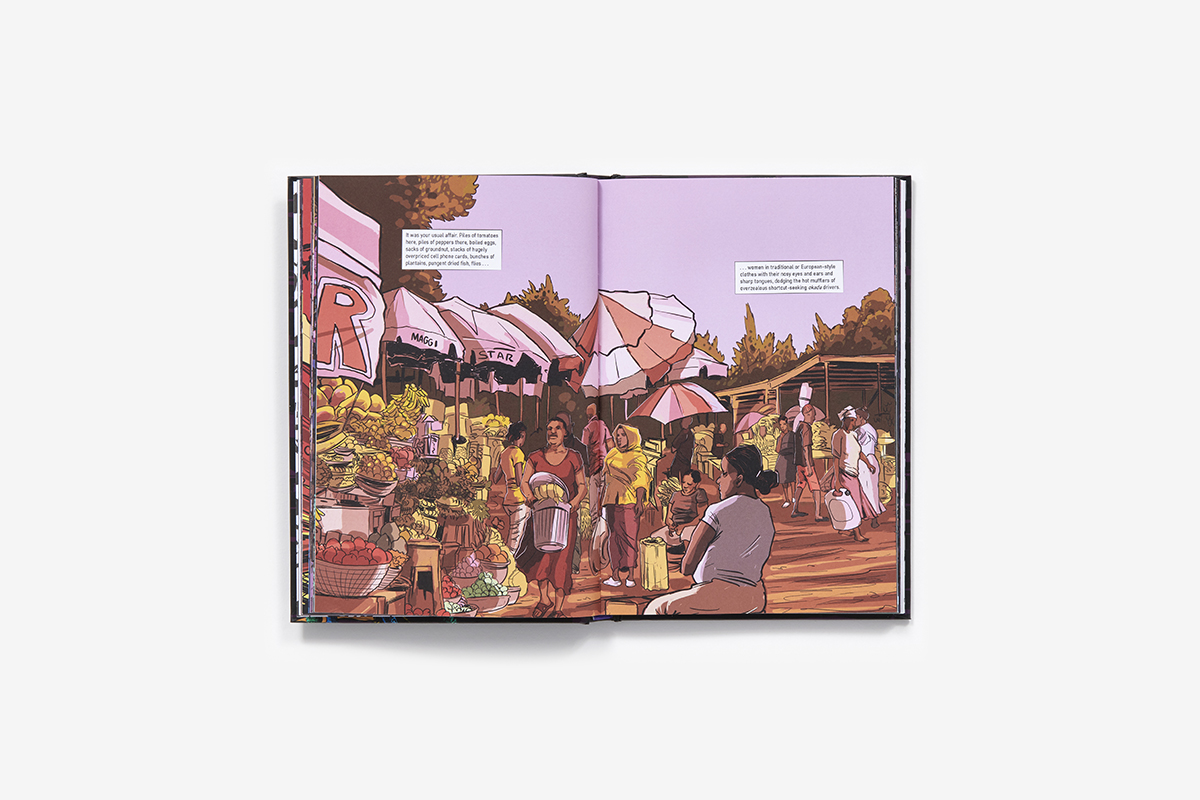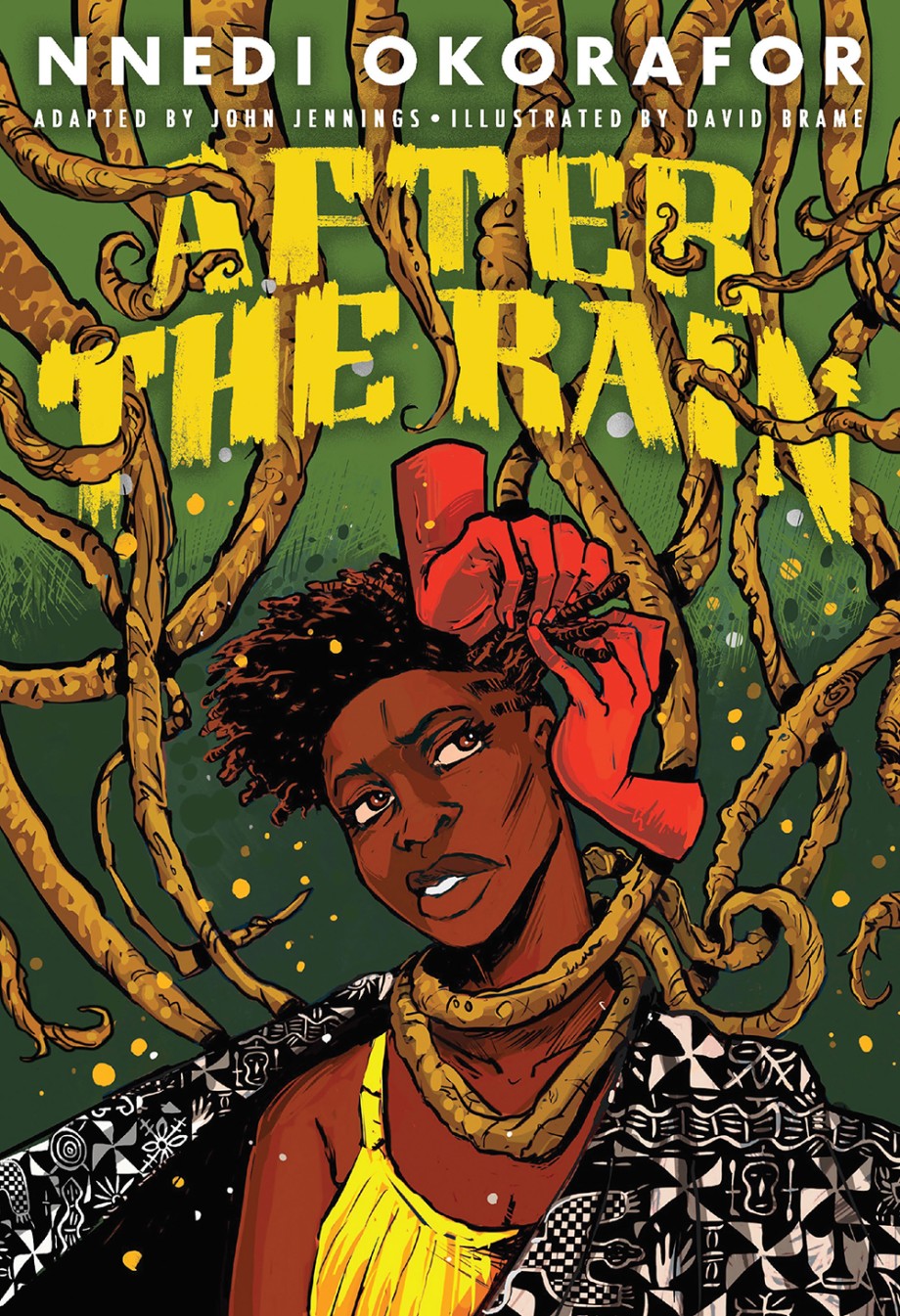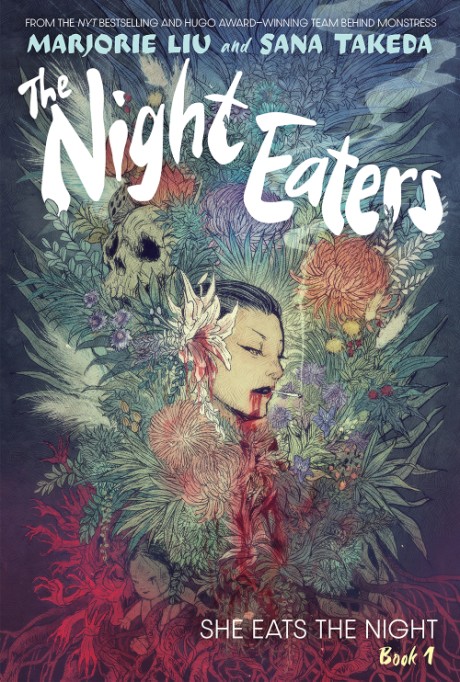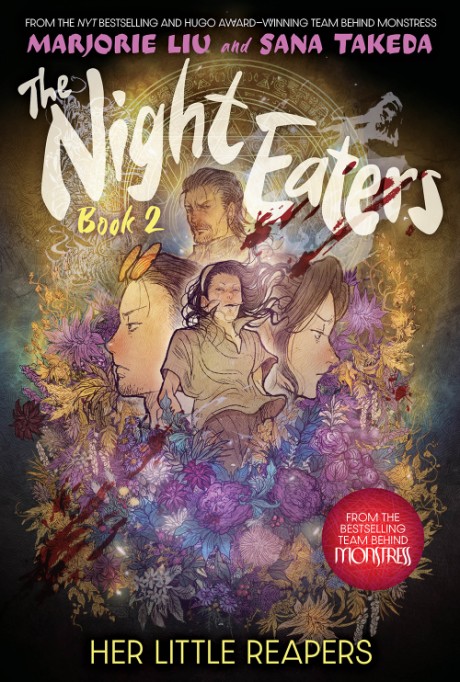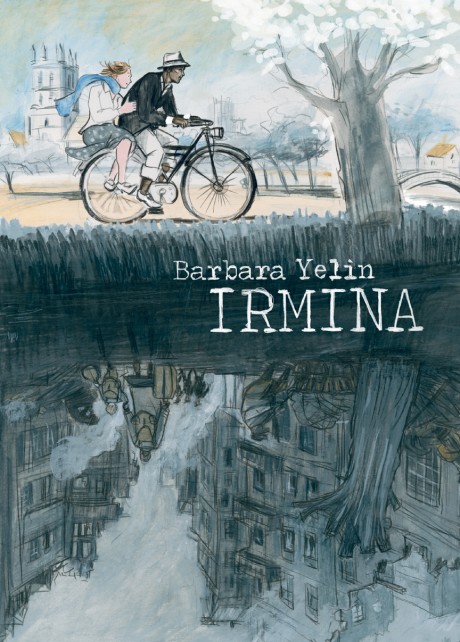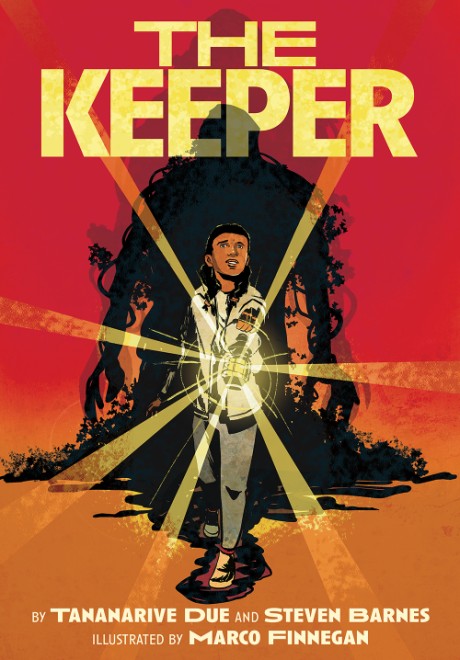After the Rain is a graphic novel adaptation of Hugo and Nebula award-winning author Nnedi Okorafor’s short story “On the Road.”
During a violent and unexpected storm in a small Nigerian town, the destiny of a Nigerian-American woman named Chioma is revealed . . . and her life is changed forever. She answers a knock at her door and is horrified to see a boy with a severe head wound standing at her doorstep. He reaches for her, and his touch burns like fire. Something is very wrong. Haunted and hunted, Chioma must embrace her heritage in order to survive.
John Jennings and David Brame’s graphic novel collaboration uses bold art and colors to powerfully tell this tale of identity and destiny.
Praise
“Brame’s bold and arresting use of color and shading lends an unnerving atmosphere to the setting, while his attention to facial expressions injects the panels with emotion. This mostly faithful adaptation honors Okorafor’s voice and paints a potent portrait of Nigeria and its folklore.”Publishers Weekly
—
“This exploration of trauma and family history through the body is perfectly adapted to the graphic medium.”Booklist
—
“After the Rain is far more than a well-rendered tribute to a trailblazing black female writer. In this case, it's also a kind of visual incarnation of the story's theme… You don't simply observe Chioma's unwilling confrontation with the world her ancestors mythologized, you experience it.”NPR Books
—
“…a phenomenal and haunting story…”Comic Book Resources
—
“Jennings paints an initially terrifying reality, highlighting the vulnerability of self-discovery and the tension of being from two different worlds and cultures. Part horror, part magical realism, this #OwnVoices story is a worthwhile addition to any collection.”School Library Journal STARRED review
—
“After the Rain explores the boundaries we draw within ourselves, the way we seek to compartmentalize to fit in, and the remarkable people we find within ourselves when we break those barriers down.”Book Riot
—
“After The Rain is an intense realization of Okorafor’s short story and uses the horror elements to thematic effect in a visceral and important way, and as a statement of intention for what will follow at Megascope, it hints at exciting work to come.”Comics Beat
—
“…the story is best experienced rather than described, since its force is in its lush visuals and destabilizing twists. Okorafor’s original language gets heavily employed in swathes of text boxes and Damian Duffy’s kinetic lettering. That text from Okorafor’s story conveys the fearsome uncertainty in being carried into this frightening sequence of otherworldly trials.”Multiversity Comics
—




